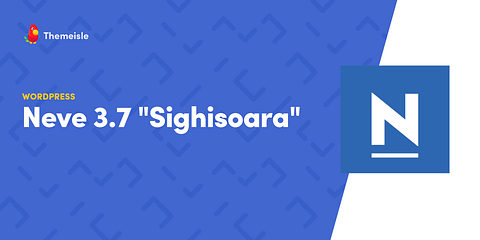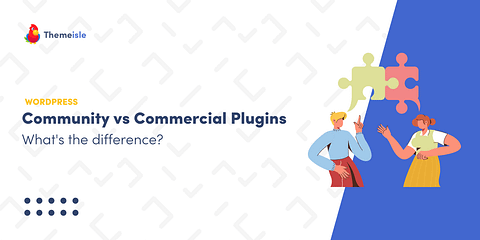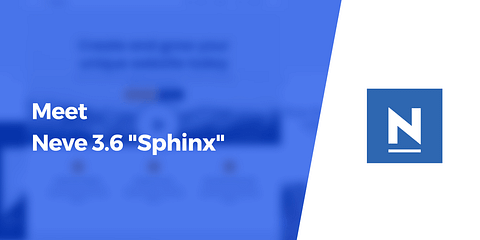I’m back with the showcase series, an interesting process for us to understand our users, their needs, and the various uses of Neve, our top theme. Neve recently surpassed 80,000 active installs, so I’m reaching out to some of the people who use Neve to learn more about them.
I thought this might be a difficult job but, so far, the people I’ve talked to have been extremely open, friendly, and willing to answer all types of questions.
In this showcase, we’ll be looking at how New England Cord Blood Bank is adapting to modern-day customers and using Neve to keep their content optimized.

If you’re a parent, you might have heard about stem cells and the medical developments around it. If you haven’t, like me, you are about to get your knowledge updated. I’ve talked to John Foley, Sales and Marketing Manager of the New England Cord Blood Bank and felt like I was on the Discovery Health Channel film set. It was no surprise to find out that John majored in Philosophy, same as me. Since then, he moved towards online advertising (like me) and he’s been with the Cord Blood bank for three and a half years (I swear it’s when I started at Themeisle). Okay, enough with the synchronicity.
John has become very knowledgeable about the collection, processing, and storage of stem cells and solely worked on the redesign of the website with Neve. So let’s look at John’s journey so far, the website’s recent redesign, and the particularities of this future-like industry.

Design: John Foley
From: Massachusetts, United States of America
Years using WordPress: 10
Plugins: Elementor, Ideal Interactive Map, FooGallery, Gravity Forms
John Foley on his experience with WordPress and Neve
How did you get to work with WordPress?
I started using WordPress about ten years ago, when I started a printing and promotional products company. I’m no pro but, you know, just like everyone else, you learn as you go along.
I studied Philosophy in college. It was an attractive major for me because I was fascinated by lots of areas of study, but I really didn’t know what I wanted to do for a profession. A student of Philosophy covers a lot of topics that interest me, from medical ethics, to physics, and beyond, so it made sense to me to go down that path of study.
Thankfully, what I gained from studying philosophy applies to my work every day. Whether it be setting up conditional rules and calculations in a website form, to writing ‘AI’ algorithms for our website chat interface, to syncing website user data to our CRM, there’s rarely a day where I don’t lean on the chops I acquired while studying logic and Philosophy. But the bad reputation still persists, at least over here. They have a joke in the United States, “What can you do with a philosophy degree? Well, you can flip burgers”, things like that. But you and I know that the curriculum offered in college level Philosophy departments is extremely useful in life, regardless of what field someone ends up working in.
Are you now specialized in online marketing?
It’s kind of the area that I’ve grown up in. When I got to college, I worked in print advertising for a little bit. I got familiar with print advertising and I’ve designed print ads and published print ads for different organizations.
Three and a half years ago I really started to get heavily involved in online digital advertising. And that’s a full time job by itself, that takes years to master. Even though they’re designed well and the UX is fine, platforms like Google Ads and Bing are still very complex programs that can take a decade to get full control of. I’m just kind of in my entry-level stages of becoming an expert in digital online advertising.
Who redesigned the site with Neve and what was the process?
The previous website was outdated. It was not responsive, it was riddled with defunct code snippets and content was slow to load. It was great to finally get working on the Cord Blood site with Neve.
We have a bunch of old blog posts. They’re still valuable to us SEO wise but aesthetically they looked horrible because they were made on that old site.
What were you looking for in a theme?
First and foremost, I was looking for an HTML5 theme that would be very responsive. I didn’t want that to be a question. The goal is to have a site that displays on all media fine. Obviously, there are lots of themes out there so I think my initial search probably started with a query like “WordPress themes, HTML5, responsive”.
From there, you get all these lists articles that have the top ten and blah, blah, blah. At one point I bumped into Neve. I probably considered maybe five or ten different themes, opened up the previews, went through the test sites and from there narrowed it down by what I liked and then went to read reviews. The theme already had good reviews, I think. If there were reviews at that point which definitely played a part in my decision to go with Neve
How long did it take to build and launch the site?
I wasn’t able to work on it full time, so it was about a month and a half.
Our site overall is pretty basic. Mostly basic pages, a few forms here and there. The original goal when creating the new site was taking our existing content and basically cutting and pasting it into new Elementor pages. I mainly focused on our menu pages because those are the pages that people are going to be navigating to most often. So the month and a half were really just setting up the homepage and making sure our other main pages were as nice as possible.
Now our second stage is kind of going back into the other pages and posts and trying to optimize it. There were a lot of competing pages or pages that just aren’t optimized well, the images aren’t tagged or whatever the case may be. So that’s been the sort of stage two of the project, worrying about our old content. As far as the first stage of getting our main content into the new theme, it was easy.
I’m trying to imagine the scale of the Cord Blood Bank. How does it compare to the blood banking industry as a whole?
I’d say there are ten main players. One thing that makes NECBB different is that we work right down the hallway from our laboratory and our cell biologists while some of our competitors don’t even work in the same state as the laboratory. If a prospect happens to answer or ask a question that we don’t know the answer to, we can literally put them on hold and walk down the hallway and get the answer. Whereas with a competitor that doesn’t do their processing and storage in the same facility that might take a few days or a week to get the answer back. That’s one way where we stand out quite a bit, we’re very customer-centric.
One nice little sales bullet point that we give our prospects is that we’re family-owned. The Rizza family started NECBB in 1997, and it’s affiliate company National Dental Pulp Laboratory (NDPL) in 2007. They also started New England Cryogenic Center in 1971, and in that regard, are considered worldwide pioneers in the cryogenic storage of human cells and tissue. We’re very steady, which is important to many because they want to know that if they’re sending their valuable stem cells to a laboratory to store they won’t need to move them.
How would you describe modern-day customers in relation to your website and business?
Like a lot of products or industries nowadays, the customer is really empowered to do a lot of learning by themselves. In fact, that’s the whole model of inbound marketing, right? You want to provide your prospects with exactly what they’re looking for.
We find that a lot of people are doing a good amount of online research before they even start calling companies. There’s a spectrum of clients and, sure, there are some clients that don’t know anything and they start from square one, and have us tell them about everything. But the ones that stick out to me, and I think it happens more and more nowadays, as compared to maybe 10 or 20 years ago, is people who call up and they’ve already gotten the answers that fit to the questions that they had, whether it’s from our site or the competitor’s site. By the time they’re calling us they’re really trying to figure out “Do these people seem like they have their head on their shoulders? Are they professional? Are they returning my calls? Are they knowledgeable?” that sort of stuff.
We’ve got to tailor to the modern-day consumer, which oftentimes is someone who doesn’t want to call. If you look at the millennial profile, at least the United States millennial profile, they don’t want companies calling them. They want to get just the information they need, “You can send it to my email, I’m going to unsubscribe to your list after I get the information.”
When people call in or fill out an online form, by the time we’re talking to them on the phone, a lot of times it’s just answering those final questions: “If I enroll today, when does it ship out?”, “If I give birth on a Saturday, do I have to pay extra?” these little, kind of last-minute, questions.
What are your favorite WordPress tools?
I’d put Elementor at the top of the list, that’s a great tool. I love using it.
I use an interactive map on both of the websites, which presents really clean on mobile and desktop. I think it’s called Ideal Interactive Map.
I’ve used FooGallery on both sites. Nothing fancy, but I like it. On the dental side, we have a
research paper library where we host links to all of the pertinent research papers that are coming out about either dental stem cells or mesenchymal cells. I used FooGallery for that and we’re gonna build out a gallery on the cord blood site, probably using the same tool.
I use Yoast all the time. We use it as a benchmark when considering SEO. Come to think of it, there are plenty of other tools I use that I like, like Gravity Forms.
What would you say is the biggest challenge in this business?
I guess I can answer in terms of things that worry me, maybe. One thing is this trend of what’s called delayed cord clamping. What that means is that when a baby’s born, they’re essentially delaying the clamping of the cord. That will allow some of the blood in the cord to go into the baby. That adversely affects the cord blood collection because there is less blood in the umbilical cord to be collected. The more, the better. If someone is planning on banking their cord blood and then they tell us, we also are going to delay cord clamping, we’ll have a discussion about how long they plan to delay and they are aware that they’re necessarily going to get less blood if they do. We try to tell them if you’re looking to do both, maybe aim for 30 seconds or so. So that’s something that is kind of a potential hurdle.
That wraps up our interview with John Foley of New England Cord Blood Bank. Read the previous showcase here.
Want to get featured in this series?
Send us your website built with Neve and we’ll feature what your business/website is all about. Then we’ll post it on our blog and send it in our newsletter to 5,000+ subscribers. Join the series or stay put for the next showcase!





















Or start the conversation in our Facebook group for WordPress professionals. Find answers, share tips, and get help from other WordPress experts. Join now (it’s free)!